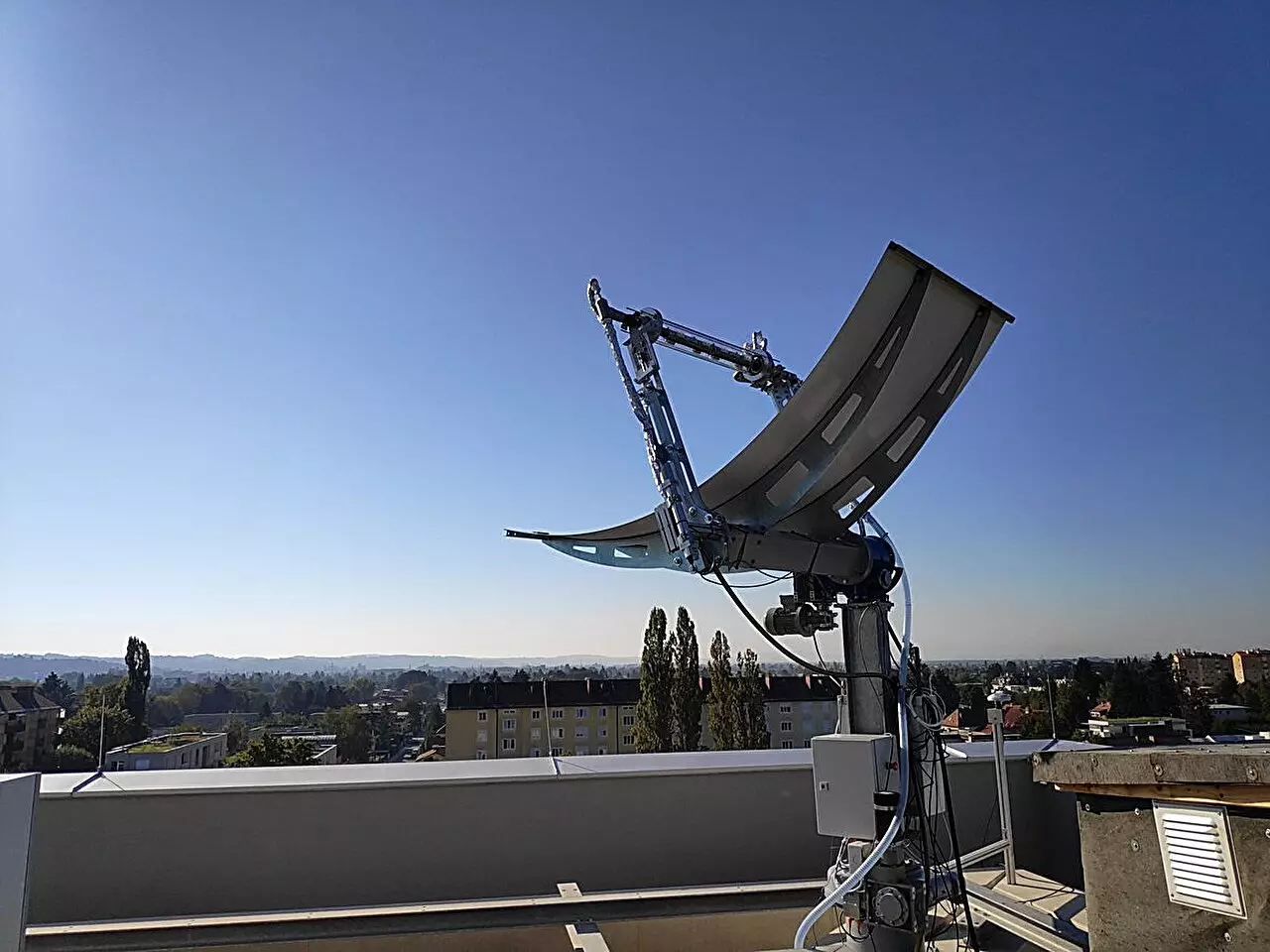Solar power has long been hailed as a promising alternative energy source, but high costs and technological limitations have hindered its widespread adoption. However, recent technological innovations have the potential to revolutionize the way we generate solar power, making it more cost-effective and efficient than ever before. One such innovation is the development of parabolic trough collectors with cost-effective photovoltaic cells that can generate both electricity and thermal energy simultaneously.
Led by Armin Buchroithner from the Institute of Electrical Measurement and Sensor Systems at Graz University of Technology, an international team has made significant strides in the field of concentrator photovoltaic cells. The newly developed solar module consists of a trough-shaped concave mirror that focuses the sun’s rays onto photovoltaic cells arranged in the focal line. The waste heat from the cells is then transferred to a heat transfer fluid, which can be utilized for various industrial processes, heating, or cooling.
One of the key advancements in this technology is the use of cost-effective and robust silicon solar cells developed in collaboration with the Turkish research center GÜNAM. These cells are able to withstand the high temperatures of concentrated sunlight, thanks to the efficient cooling system optimized by the research team. By amplifying solar irradiation by a factor of 60 to 120, the parabolic trough mirrors are able to generate both thermal and electrical energy in a more efficient and sustainable manner.
The potential of this technology to significantly contribute to the energy transition is enormous. By harnessing the power of solar radiation, we can reduce our reliance on fossil fuels and move towards a more sustainable energy future. While parabolic trough solar power plants have traditionally been located in sunny regions like Spain or the Persian Gulf, the success of these new innovations opens up the possibility of implementing this technology in regions with less sunshine, such as Austria. This could have far-reaching implications for the industrial sector, providing a cleaner and more sustainable alternative to traditional energy sources.
The ongoing research and development in concentrator photovoltaic cells are paving the way for a new era in solar power generation. With the potential to reduce costs, improve efficiency, and minimize environmental impact, these innovations hold great promise for the future of renewable energy.



Leave a Reply